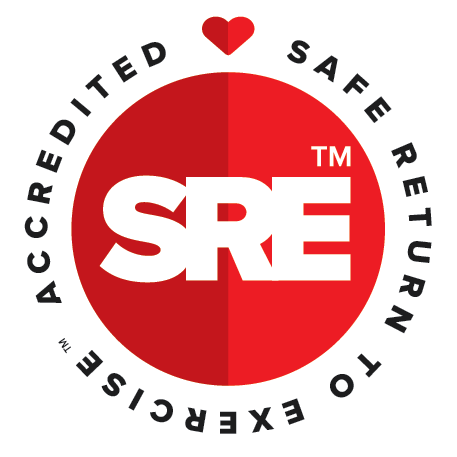Abdominal Separation – What It Is and What You Can Do About It.

Abdominal separation, also known as diastasis recti or DRAM (Diastasis of Recti Abdominis Muscles), can be something many mums become concerned about during pregnancy and after birth. For some mums, the separation of abdominal muscles reduces on its own, over time. Whereas for other mums, specific rehabilitation and strength exercises are necessary to restore core function. So it’s not just newly postnatal mums who can experience abdominal separation.
In this article I explain what abdominal separation is, share with you what you can do to start rebuilding your core function and debunk some abdominal separation myths.
What Is Abdominal Separation?
- When you’re pregnant your abdominal muscles can only stretch over your bump so far.
- When they can’t stretch any further the connective tissue (called the linea alba) in the middle of the rectus abdominis (six pack) muscles then starts to stretch allowing the two rectus muscles to move further apart, giving your baby more room to grow.
- Connective tissue is supple and is meant to stretch like this.
- After birth you may find that there is a deep or wide gap between the two rectus muscles. This is completely normal and it takes time, and sometimes specific rehabilitation exercises, to increase the tension and thickness of the connective tissue as well as rebuild strength of the abdominal muscles.
What Can I Do About My Abdominal Separation?
- Don’t panic. One hundred percent of women at full term will experience abdominal separation and there is help out there to restore core function.
- Whether you are pregnant or postnatal, find a women’s health physio who you can work with to help guide you in strengthening your core.
- Learn how to engage your transverse abdominis (your deep core muscles). These muscles, when engaged, help create tension through the linea alba. Over time, tissue that is repeatedly exposed to tension becomes thicker (which is what we want for the linea alba).
- Keep an eye on what movement patterns cause doming/coning or sinking. Doming/coning or sinking is when a ridge or a dome appears down the length of your abdomen or sinks inwards in a front-loaded movement, like sitting up or planks. It’s an indication that your linea alba is unable to control the internal pressure created from a certain movement. If you notice this happening, stop, reset and focus on engaging your deep abdominal muscles first.
- If you wish to continue exercising through your pregnancy or start exercising after the birth of your baby, find a MumSafe™ trainer near you who will work with your women’s health physio in rebuilding your core from the inside out.
Let’s Bust Some Abdominal Separation Myths…
✘ “Abdominal separation is the tearing or splitting of abdominal muscles”. This is a myth. As we’ve already learnt, it’s the stretching of the connective tissue between the two sides of the rectus muscles. There is no splitting or tearing.
✘ “You need to close the gap”. Not at all. The width of the gap may never go back to what it used to be. What’s more important is the depth of the gap. When bringing back core function the aim is to create thickness and tension in the connective tissue. A deep gap between muscles suggests there is not enough tension or thickness in the tissue.
✘ “You can’t heal abdominal separation after 12 months”. Not true at all, you can absolutely still decrease your separation. Strengthening your core and improving the integrity of the connective tissue can take a long time, so limiting yourself to just 12 months postpartum isn’t helpful. Even if you are years on from giving birth, it’s never too late to rebuild your core.
✘ “Doming or coning makes your separation worse” Coning or doming won’t make your separation worse but it is an indication that your core is struggling to control pressure in a certain position. If this happens, reset, take a breath and focus on engaging deep core muscles first before repeating the movement.
✘ “You should never do crunches, sit ups or planks with abdominal separation after having a baby”. Although this used to be the advice given, it’s now outdated and new research suggests that gentle flexion and front-loaded exercises like crunches or incline planks, are important in strengthening the rectus abdominis muscles. HOWEVER, this should be done under the guidance of a women’s health physio or MumSafe™ trainer who can help you engage your deep core muscles at the same time.
If in doubt about how you should be moving, always consult your medical professional and women’s
health physiotherapist.
Louise Hurley runs Strong Mums in New South Wales, . Learn more about Louise and Book your Trial today.
